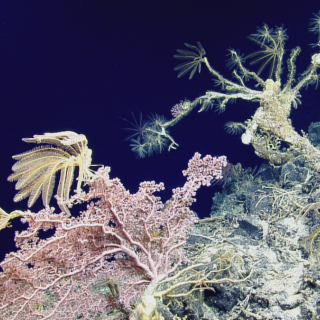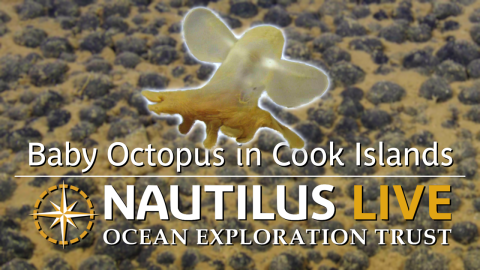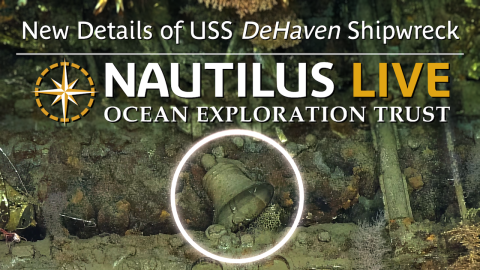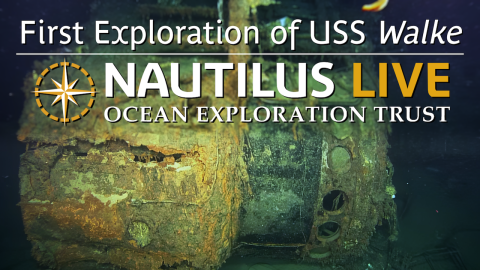Giant Molas Spotted Deep Offshore American Samoa
During the E Mamana Ou Gataifale II expedition, OET’s Corps of Exploration had the exciting chance to witness a giant ocean sunfish! Cruising calmly past ROV Hercules at around 580 meters (1,900 feet) deep, the encounter occurred as the team was exploring a partially collapsed volcanic cone on Manuʻa Ridge between the islands of Taʻū and Olosega Islands in American Samoa. The onboard team of scientists speculates this could potentially be one of the deepest sightings captured on video. While tagged individuals have been recorded going as deep as 1000 meters, a 2011 study found these fish spent less than one percent of their time at depths greater than 500 meters, making this sighting especially exciting!
Then across the dive, the team had, not one, but two more visits with these unique pelagic planktivores! One of the largest bony fish in the ocean, sunfish adults can grow to weigh over 2,000kg. Expert Scientists Ashore later updated the animal identification from this dive to include both Mola alexandrini and Masturus lanceolatus in the Molidae family. These unusually-shaped fish are known to feed in deeper waters but travel to surface waters to clean parasites from their bodies. Despite their surprising body shape, they are strong swimmers with large dorsal fins sometimes seen breaking the ocean surface and surprising boaters. Ocean sunfish eat mainly jellyfish as well as squid, crustaceans, eelgrass, fish larvae, and small fishes. One ocean sunfish species, Mola mola, is listed by the IUCN as Vulnerable to extinction, with fish often interacting with gillnet fisheries and ingesting ocean plastic.
The NA165 E Mamana Ou Gataifale II expedition is led by Ocean Exploration Trust and funded by NOAA Ocean Exploration, NOAA Office of Marine and Aviation Operations Uncrewed Systems Operations Center, and the Bureau of Ocean Energy Management via the Ocean Exploration Cooperative Institute in partnership with the National Marine Sanctuary of American Samoa and with support from Woods Hole Oceanographic Institution and Air/Sea Heritage Foundation.

E Mamana Ou Gataifale II - American Samoa
American Samoa is the southernmost U.S. territory, centered in the South Pacific, 2,300 miles southwest of Hawaiʻi, and 1,500 miles northeast of New Zealand. It is home to the cradle of Polynesia’s oldest culture.



